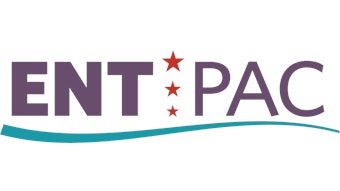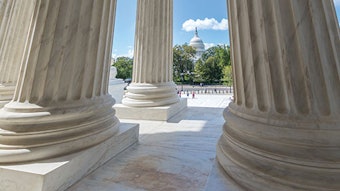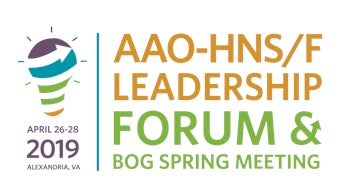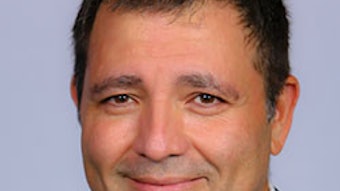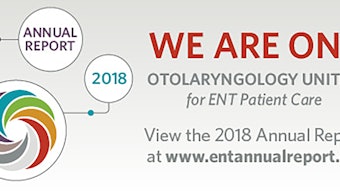Advocacy in Action: CMS heeds AAO-HNS concerns on 2019 Physician Fee Schedule
On November 1, the Centers for Medicare & Medicaid Services (CMS) released its final rule for the CY 2019 Medicare Physician Fee Schedule/Quality Payment Program after reviewing more than 15,000 stakeholder comments submitted on this summer’s proposed rule.
James C. Denneny III, MD
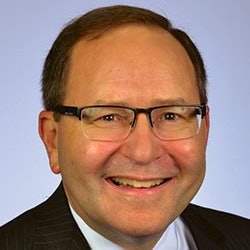 James C. Denneny III, MD
James C. Denneny III, MD
AAO-HNS/F EVP/CEO
E/M reporting and documentation requirements
Within the proposed rule, there were a number of proposals with significant ramifications for otolaryngologists. The most far-reaching of these involved multiple changes to the E/M reporting and documentation requirements. CMS proposed “collapsing” the current E/M reporting for new and established patients seen in the office from five levels to either two or three levels. In conjunction with this, CMS proposed add-on G codes for primary care and inherently complex specialty E/M visits, as well as a prolonged service G Code. CMS intended to pay for these changes by applying an MPPR/Modifier 25 reduction for procedures reported on the same day as an E/M service, which would have reduced the payment for the lower valued RVU service by 50 percent. CMS also proposed condensing the practice expense payment for E/M office visits by creating a new indirect practice expense category solely for office visits. This particular rule would have reduced the indirect practice expense by 36 percent for otolaryngology. As a “carrot” to providers, CMS proposed to reduce E/M documentation requirements.
The final rule included several changes to E/M documentation guidelines, which we supported:
- Physicians will no longer be required to re-record elements of history and physical exam when there is evidence that the information has been reviewed and updated.
- Physicians must only document that they reviewed and verified information regarding chief complaint and history that is already recorded by ancillary staff or the patient.
In addition, CMS elected to delay the implementation of any “collapse” of the E/M reporting until CY 2021 and expressed significant interest in the work that the AMA CPT/RUC workgroup is doing in this area. The agency did convey its intention to move toward two basic payment rates for office visit services—one for straightforward visits and another for complex visits. CMS also noted its intention to establish add-on codes for primary care and inherently complex specialty E/M visits. This was in line with the AAO-HNS recommendations for these proposals.
The Academy strongly opposed the following portions of the proposed rule, which were rescinded by CMS and will not be implemented in CY 2019.
- Payment reductions by 50 percent for office visits that occur on the same date as procedures (or by a physician in the same group practice). This proposal was the most significant threat to otolaryngology practices. If this proposal had gone through, many private payers would have implemented similar policies.
- Condense practice expense payment for E/M office visits by creating a new indirect practice expense category solely for office visits. This would have resulted in a 36 percent payment decline in allergy-based services and a 28 percent decline in otolaryngology-based services.
Balloon sinus surgery kits
CMS requested comments on two issues related to Balloon Sinus Ostial Dilation (BSOD). The agency was interested in the current pricing of the kits utilized for BSOD, which were last priced in 2011, as well as the quantity allocated per sinus. Current Medicare policy allows 0.5 kits per sinus. With collaboration from industry and input from the ARS, the Academy submitted proposed pricing for the kits and recommended either keeping the current system allowing 0.5 kits per sinus or a new approach that paid on actual usage. The AAO-HNS also commented that there was not enough information to justify altering the number of sinuses per kit if CMS chose not to rely on actual usage. The final rule response from CMS is below:
“After consideration of the public comments, we are not finalizing any changes to the balloon sinus surgery kit (SA106) supply for CY 2019, outside of the market-based supply and equipment pricing update to the supply cost. We do not believe that we have sufficient information to finalize any other changes to the supply cost or supply quantity in the associated CPT codes at this point in time.” (emphasis added)
CMS utilized the proposed pricing information provided by the AAO-HNS to help formulate the new price listed in the final rule’s payment table. CMS chose a price slightly higher than the average list price submitted by the AAO-HNS and opted to continue the policy of 0.5 kits per sinus for CY 2019.
Allergy and immunology codes
Another key issue for our members was pricing for multi-antigen vials used for allergy immunotherapy designated by code SH007. The proposed rule would have resulted in a 28.7 percent decrease in reimbursement per vial. In collaboration with the AAOA and AAAAI, the Academy submitted evidence that documented increasing cost for this service (rather than decreasing costs) and strongly opposed this unwarranted reduction in the proposed rule.
The CMS comments below reflect the final rule outcome:
“We reexamined the recommended price of each multi-component item cited by a commenter. Table 9 at the conclusion of this section lists the supply and equipment codes with price changes based on feedback from the commenters and the resulting additional research into pricing.”
The result was not a 28.7 percent decrease, but an 87.5 percent increase when compared with the proposed value.
Quality Payment Program (QPP)
There were two significant proposals related to the QPP and our Qualified Clinical Data Registry, Reg-entSM. The first proposal would have required QCDRs to enter into a licensing agreement with CMS that would have resulted in a loss of intellectual property for all QCDR measures used for MIPS reporting. Equally as important is the agency’s new definition of a QCDR, which emanated from stakeholder comments. Below are the CMS responses for CY 2019:
CMS Proposal to require QCDRs to enter into a measure licensing agreement with CMS (pages 1485-1487): “Based on the feedback and concerns raised by stakeholders, in the interim, we are not finalizing this proposal. Rather, while we believe our proposal is consistent with the Administrative Procedure Act, we are persuaded by the other concerns raised by stakeholders on the implementation of this policy and are therefore retaining our existing policy that QCDR vendors may seek permission from another QCDR to use an existing measure that is owned by the other QCDR (82 FR 53813).”
CMS also adopted the new definition of a QCDR (pages 1458-1466): “As described in the CY 2019 PFS proposed rule (83 FR 35982), we want to ensure that QCDRs that participate in MIPS have access to clinical expertise in quality measurement and are able to provide and demonstrate an understanding of the clinical medicine, evidence-based gaps in care, and opportunities for improvement in the quality of care delivered to patients and priorities that are important to MIPS eligible clinicians.
“After consideration of the public comments received, we are finalizing our proposal to update the definition of a QCDR at §414.1305 beginning with the 2022 MIPS payment year, as proposed, to state that a QCDR is an entity with clinical expertise in medicine and in quality measurement development that collects medical or clinical data on behalf of a MIPS eligible clinician for the purpose of patient and disease tracking to foster improvement in the quality of care provided to patients.”
Another final rule – Additional good news
In the Hospital Outpatient Prospective Payment (OPPS) final rule released November 2, CMS continued its drive toward site neutrality for outpatient services, specifically clinic visits for outpatient settings. The proposed rule had recommended the equalization occur in CY 2019. The OPPS final rule describes phasing this change in over two years—2019 and 2020. Below are comments from CMS and a quote from CMS Administrator Seema Verma.
“In a final rule this morning, the agency said it will reduce Medicare payments for clinic visits at off-campus hospital clinics to bring them more in line with the lower reimbursement rate for physician offices—a policy known as site neutral payments.
“Hospital outpatient clinics have historically received higher payments for the same services provided in a physician’s office. Today’s rule does not affect clinics on hospital campuses.”
The change will be phased in over two years, instead of one year as originally proposed. CMS said the move will save Medicare $380 million in 2019.
“Today’s rule advances competition by creating a level playing field for providers so they can compete for patients on the basis of quality and care,” Administrator Verma said in a statement. “The final policies remove unnecessary and inefficient payment differences, so patients can have more affordable choices and options.”
I would like to recognize the tremendous work our Advocacy and Research & Quality Business Units have done in helping put together the comment letter on the proposed rule and coordinating meetings with key CMS staff that allowed us to achieve these positive results.

